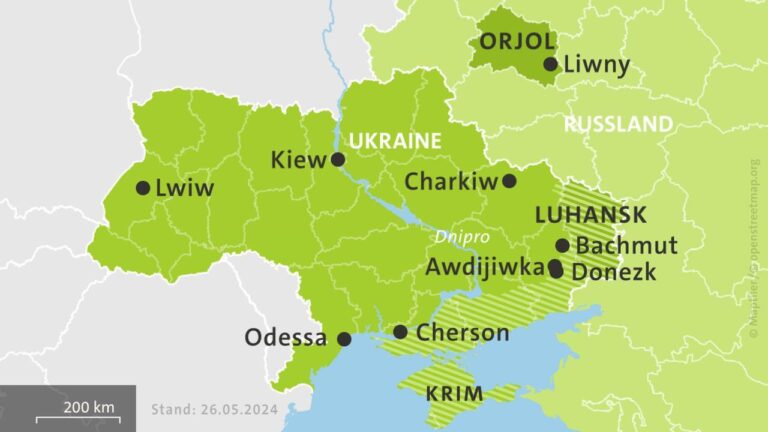Luhansk has become the first Ukrainian region to be fully occupied by Russian forces, marking a significant escalation in the ongoing conflict between Ukraine and Russia. After months of intense fighting and strategic advances, Russian troops have secured control over the entire territory of Luhansk, a key area in Eastern Ukraine’s industrial heartland. This development not only intensifies the humanitarian and security crisis in the region but also underscores the shifting dynamics of power in the conflict. As the situation evolves, the international community watches closely, assessing the implications for Ukraine’s sovereignty and the broader geopolitical landscape.
Luhansk Under Russian Control A Closer Look at the Strategic and Humanitarian Impact
The full occupation of Luhansk marks a pivotal moment in the ongoing conflict, drastically shifting the strategic landscape in Eastern Ukraine. Under Russian control, the region now serves as a critical logistical and military hub, enabling enhanced supply lines and troop movements close to key Ukrainian strongholds. This consolidation has allowed Russian forces to strengthen their defensive posture and project influence deeper into Ukrainian territory, challenging Kyiv’s efforts to regain control. Control over Luhansk also provides Russia with a symbolic victory, consolidating its claims and complicating diplomatic resolutions.
Beyond military implications, the humanitarian consequences are profound and escalating. Civilians face shortages of essential services such as healthcare, clean water, and electricity, as infrastructure remains damaged or overwhelmed. Reports highlight increasing displacement, restricted access to aid, and limited freedom of movement under the new administration. Key challenges include:
- Healthcare disruption: Hospitals operating at reduced capacity amid growing medical needs.
- Food insecurity: Supply chain interruptions causing scarcity in local markets.
- Psychological toll: Increased reports of trauma and stress among residents.
| Impact Area | Situation Before Occupation | Current Status |
|---|---|---|
| Population Movement | Relative stability | Significant displacement ongoing |
| Infrastructure | Partially functional | Critical damage & outages |
| Security | Contested frontline | Russian military control |
Life in Occupied Luhansk Challenges Faced by Residents and Shifts in Daily Reality
Since the full occupation of Luhansk by Russian forces, residents have been navigating an unpredictable and often perilous new reality. Basic necessities such as food, water, and medical supplies have become sporadically available, with frequent interruptions to utilities deepening hardships. The imposition of new administrative rules has restricted freedom of movement, severely limiting residents’ access to employment, education, and communication with the outside world. Many local businesses have shuttered, unable to operate under the opaque and shifting regulations introduced by occupying authorities.
- Freedom of expression is curtailed through enforced censorship and the silencing of dissenting voices.
- Public services face systemic disruptions, leaving vulnerable populations without essential support.
- Psychological strain mounts as families grapple with separation, violence, and uncertainty about the future.
Amid these challenges, the social fabric of Luhansk continues to evolve. Informal networks and grassroots initiatives have emerged, aiming to provide critical assistance and maintain a semblance of community cohesion. Yet, residents remain caught in a complex web of shifting loyalties and daily risks, as the occupying forces solidify control. The following table summarizes key shifts in daily life experienced by Luhansk’s population:
| Aspect | Pre-Occupation | Post-Occupation |
|---|---|---|
| Access to Healthcare | Regular hospital services | Limited, with shortages of medicine |
| Freedom of Movement | Free within Ukraine | Checkpoints, restricted travel |
| Education | Ukrainian curriculum | Russified programs imposed |
| Communication | Open internet access | Monitored, censored networks |
Pathways to Resolution Recommendations for Policy Makers and International Stakeholders
Addressing Luhansk’s complex status demands a coordinated international approach that transcends traditional diplomatic channels. Policy makers must prioritize robust mechanisms for dialogue, emphasizing humanitarian aid and conflict de-escalation. This includes supporting neutral peacekeeping missions under UN mandates, expanding sanctions targeted precisely at entities perpetuating the occupation, and fostering people-to-people exchanges that maintain cultural and economic ties despite geopolitical tensions.
International stakeholders should also focus on facilitating comprehensive negotiations involving Russia, Ukraine, and regional actors, supported by transparent monitoring systems to ensure compliance with agreements. Moreover, establishing dedicated funds to rebuild war-torn infrastructure and support displaced populations will be critical. Below is a streamlined roadmap of priority actions to guide decision-makers:
| Priority | Key Actions | Expected Outcome |
|---|---|---|
| Humanitarian Access | Secure corridors & aid delivery | Alleviation of civilian suffering |
| Conflict De-escalation | Ceasefire agreements & peace talks | Reduction of hostilities |
| Economic Sanctions | Targeted measures against occupation forces | Pressure to comply with international law |
| Reconstruction Support | Funding infrastructure & social cohesion | Facilitate long-term stability |
In Conclusion
As Luhansk becomes the first Ukrainian region fully occupied by Russian forces, the implications for the broader conflict remain deeply concerning. The consolidation of control in this strategic area marks a significant development in Moscow’s ongoing campaign, raising urgent questions about the future stability of eastern Ukraine. Observers and policymakers will be closely monitoring how this shift influences diplomatic efforts and the prospects for renewed hostilities in the region. Commonspace.eu will continue to provide in-depth coverage as the situation evolves.




